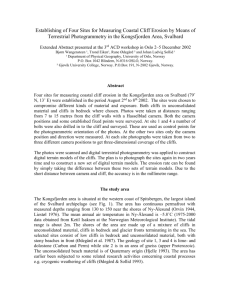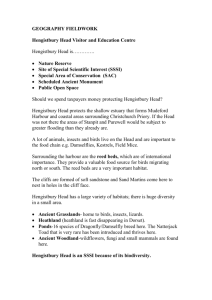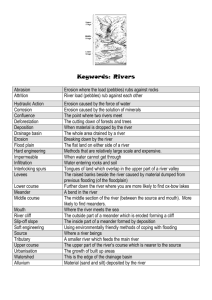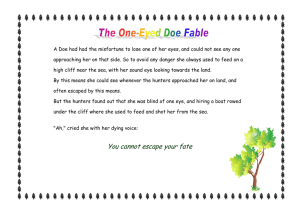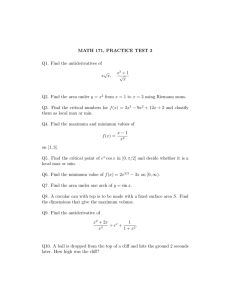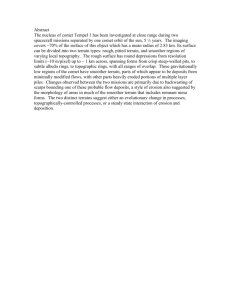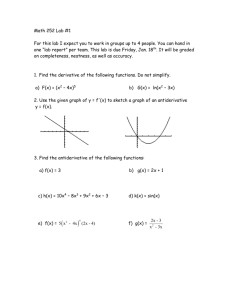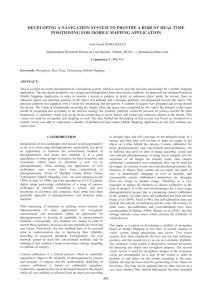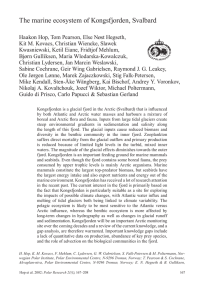Establishing four sites for measuring coastal cliff erosion by means
advertisement
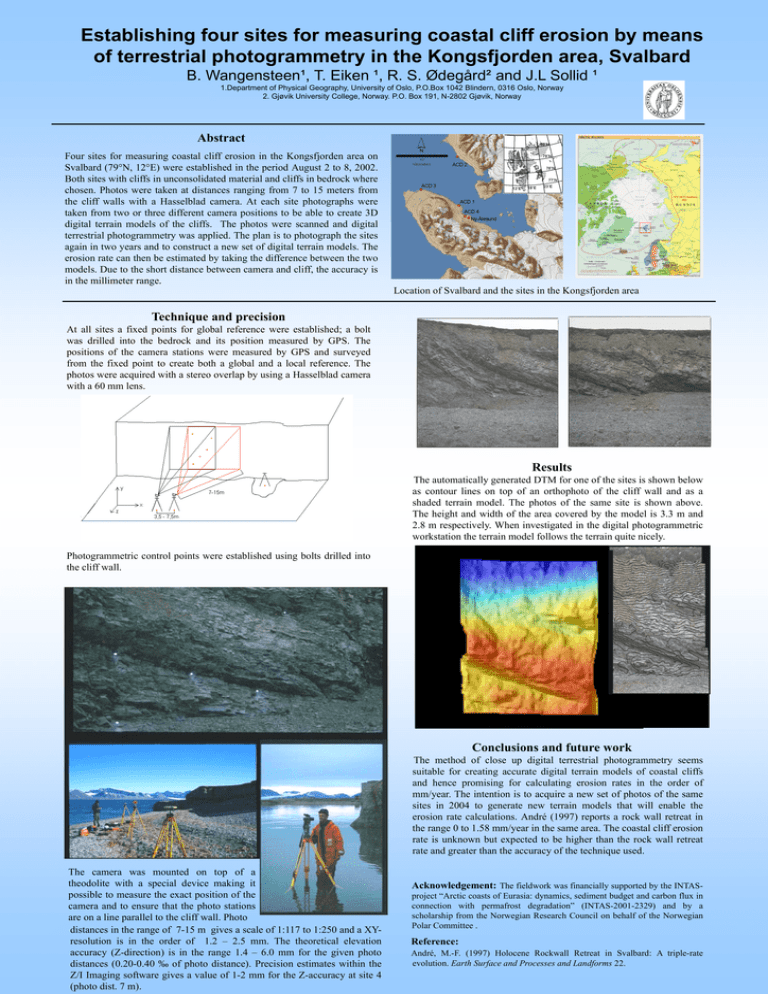
Establishing four sites for measuring coastal cliff erosion by means of terrestrial photogrammetry in the Kongsfjorden area, Svalbard B. Wangensteen¹, T. Eiken ¹, R. S. Ødegård² and J.L Sollid ¹ 1.Department of Physical Geography, University of Oslo, P.O.Box 1042 Blindern, 0316 Oslo, Norway 2. Gjøvik University College, Norway. P.O. Box 191, N-2802 Gjøvik, Norway Abstract Four sites for measuring coastal cliff erosion in the Kongsfjorden area on Svalbard (79°N, 12°E) were established in the period August 2 to 8, 2002. Both sites with cliffs in unconsolidated material and cliffs in bedrock where chosen. Photos were taken at distances ranging from 7 to 15 meters from the cliff walls with a Hasselblad camera. At each site photographs were taken from two or three different camera positions to be able to create 3D digital terrain models of the cliffs. The photos were scanned and digital terrestrial photogrammetry was applied. The plan is to photograph the sites again in two years and to construct a new set of digital terrain models. The erosion rate can then be estimated by taking the difference between the two models. Due to the short distance between camera and cliff, the accuracy is in the millimeter range. Location of Svalbard and the sites in the Kongsfjorden area Technique and precision At all sites a fixed points for global reference were established; a bolt was drilled into the bedrock and its position measured by GPS. The positions of the camera stations were measured by GPS and surveyed from the fixed point to create both a global and a local reference. The photos were acquired with a stereo overlap by using a Hasselblad camera with a 60 mm lens. Results The automatically generated DTM for one of the sites is shown below as contour lines on top of an orthophoto of the cliff wall and as a shaded terrain model. The photos of the same site is shown above. The height and width of the area covered by the model is 3.3 m and 2.8 m respectively. When investigated in the digital photogrammetric workstation the terrain model follows the terrain quite nicely. Photogrammetric control points were established using bolts drilled into the cliff wall. Conclusions and future work The method of close up digital terrestrial photogrammetry seems suitable for creating accurate digital terrain models of coastal cliffs and hence promising for calculating erosion rates in the order of mm/year. The intention is to acquire a new set of photos of the same sites in 2004 to generate new terrain models that will enable the erosion rate calculations. André (1997) reports a rock wall retreat in the range 0 to 1.58 mm/year in the same area. The coastal cliff erosion rate is unknown but expected to be higher than the rock wall retreat rate and greater than the accuracy of the technique used. The camera was mounted on top of a theodolite with a special device making it possible to measure the exact position of the camera and to ensure that the photo stations are on a line parallel to the cliff wall. Photo distances in the range of 7-15 m gives a scale of 1:117 to 1:250 and a XYresolution is in the order of 1.2 – 2.5 mm. The theoretical elevation accuracy (Z-direction) is in the range 1.4 – 6.0 mm for the given photo distances (0.20-0.40 ‰ of photo distance). Precision estimates within the Z/I Imaging software gives a value of 1-2 mm for the Z-accuracy at site 4 (photo dist. 7 m). Acknowledgement: The fieldwork was financially supported by the INTASproject “Arctic coasts of Eurasia: dynamics, sediment budget and carbon flux in connection with permafrost degradation” (INTAS-2001-2329) and by a scholarship from the Norwegian Research Council on behalf of the Norwegian Polar Committee . Reference: André, M.-F. (1997) Holocene Rockwall Retreat in Svalbard: A triple-rate evolution. Earth Surface and Processes and Landforms 22.

